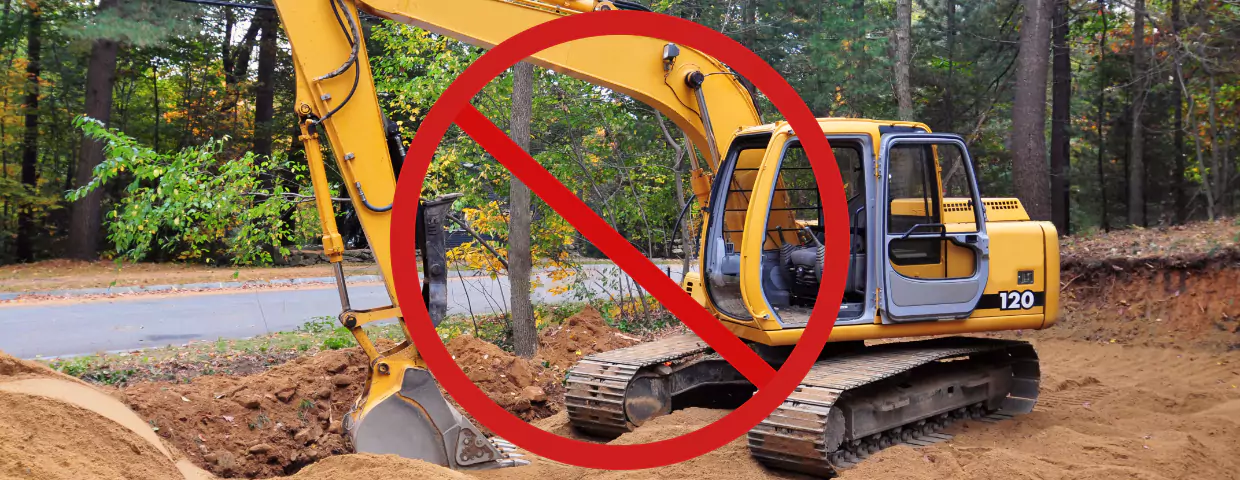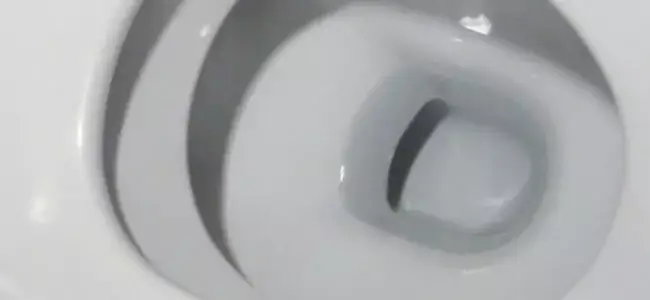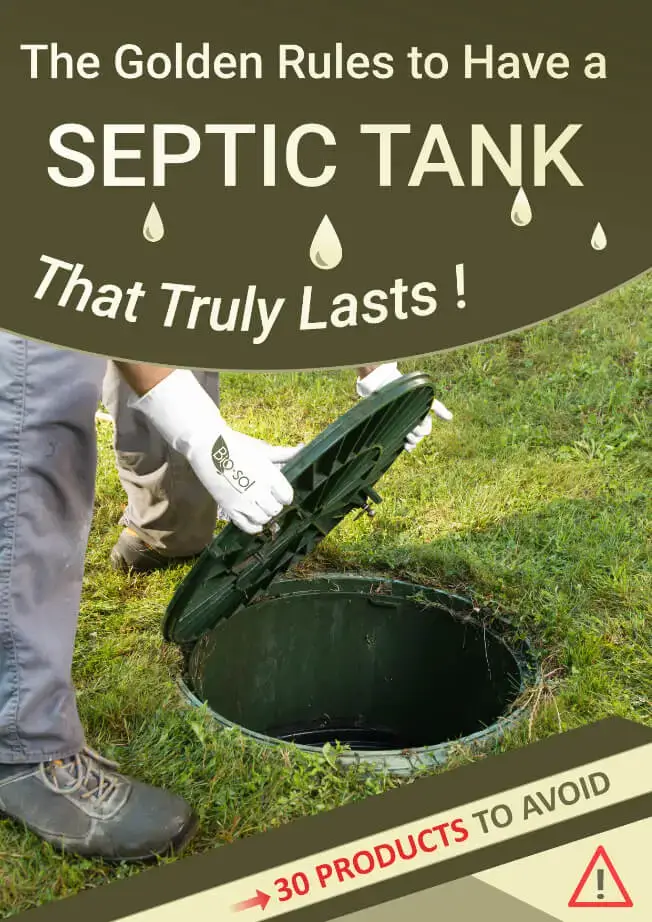How to unclog your leach field | A quick, easy and septic-safe way

TABLE OF CONTENTS
The leach field, also referred to as a drain field, receives the wastewater from the septic tank. This section of the septic system consists of a network of perforated PVC drain pipes, crushed stone and a layer of unsaturated soil. Wastewater generally flows from the septic tank to the leaching bed by gravity. The wastewater then enters the leaching bed, flows through the crushed stones, and infiltrates into the receiving soil. This final filtration step involves bacteria and other microbes that further treat the wastewater before it reaches the water table. This natural purification principle prevents groundwater contamination. However, it sometimes clogs up. Learn how to unclog your leach field in this article!
How long does a septic leach field last?
A well-maintained weeping bed should last at least 25 years, but it may be shorter or longer depending on a few factors. Most leaching fields fail due to biological or hydraulic overload:
– Hydraulic overload occurs when too much water is sent to the septic tank.
– Biological overloading occurs when too much organic material reaches the leaching field.
Don’t kill the bacteria
As a septic system owner, you must be very careful about what you discharge to the wastewater treatment system. The leaching bed uses aerobic bacteria on the receiving soil to purify the wastewater before it reaches the groundwater.
These bacteria break down organic matter and also help eliminate viruses and reduce nutrients in the wastewater. When your leaching bed is in good working order, the wastewater from your home is well treated before being returned to the water cycle. However, clogging in the leaching bed interferes with this process, resulting in inevitable environmental pollution.
Biomat build-up
As the wastewater flows through the leach field, a black, gelatinous layer develops under the distribution lines. This layer is actually a biomaterial sludge called “biomat”. Since the biomat is watertight, it greatly reduces the percolation of effluent into the soil. This biomat is usually composed of organic matter and anaerobic bacteria that attach to the soil and crushed stone. These bacteria feed on the organic material in the effluent.
Biomat is not normally harmful to the system. On the contrary, it helps to further filter the wastewater by slowing down the infiltration rate and retaining the organic matter before the water enters the soil. However, an imbalance in the growth of biomat can cause serious problems. The more the black gelatinous sludge accumulates in the trenches, the more difficult it will be for the wastewater to infiltrate and then percolate into the soil. Even a small hydraulic surcharge can cause wastewater backups and potentially spills. When wastewater backs up, it will always flow to the location that offers the least resistance. This may be where the earth fill of the leaching field is, through the septic tank lids or even inside the house!
How do you know if your leach field is failing?
The most obvious sign of a failing leaching bed is, of course, the overflow of wastewater to the surface. If the receiving soil in the leaching bed cannot accommodate any more water, the effluent will rise to the surface of the soil or, in some cases, flow out the end of the trenches. The main reason the effluent stops flowing is because too much biomat is being produced. Here are some signs to look for to see if you need to unclog your leach field…
Sluggish drains and toilets
Before the drain field stops working completely, you may notice that water is draining more slowly through the house. As long as there is room for water, the drains will continue to work. On the other hand, water may be draining more slowly.
If you ignore this problem and it is caused by the leach field, the problem will get worse over time. The septic tank may become too full and the water may not be able to seep into the ground at all. Of course, there are other plumbing problems that can lead to slow drains, so we recommend you look for other signs as well…
Septic odors
Septic tank odors can be present near the leaching field or inside the house. It is another indicator that the leaching field is failing. This is probably one of the easiest signs to identify, as it is very unpleasant.
If you smell that rotten egg smell, first make sure it’s not a buildup of organic material in the plumbing system. You can use an environmentally friendly drain cleaner (SeptiDrain) or check for abnormally high water levels in your septic tank. If the signs are accumulating, you can deduce that the leach field is most likely at fault.
High water level in the septic tank
When water is returned to clogged septic fields, the water level in the septic tank tends to rise. If there is no space left in the septic tank, the wastewater will back up through the lids or into your home. If you notice an abnormally high water level in the septic tank, it is almost certain that your leach field is at fault.
The water level should always be at the level of the drain line connecting the septic tank to the leaching field. If the water level is higher than the drain line, it means that the leaching field cannot hold any more water and it is backing up into the septic tank. It is then necessary to check if the soil may be saturated due to heavy rainfall or snowmelt and also to evaluate if there has been a recent hydraulic overload. This may explain a higher than normal water level. But, if the problem persists, we can deduce that the leaching bed is no longer functioning properly (it is most likely clogged).
Greener and taller grass around the drainfield
If you notice taller, greener grass where your leach field is located, it’s an indicator that your leach field is not functioning properly.
If wastewater can no longer infiltrate the soil, pressure can cause it to rise to the surface. When this happens, the nutrients in the wastewater can make the grass grow faster and look greener.
Puddles of water in the yard
If you notice puddles on the field, it is possible that a hydraulic overload has caused the water to rise to the surface. With a clogged leach field, the pressure is causing the water to rise. When discharged in large quantities, wastewater can literally puddle on the ground.
If this water smells like rotten eggs, be very careful not to touch it and keep your children away from the area. In some cases, perforated pipes in the leach field may become disconnected or break. If a heavy vehicle has driven by, this may be what is causing the sewage to back up. Otherwise, it is more likely to be caused by a clog.
Soil sinking or collapsing over the leachfield
If you notice that the soil is abnormally wet where the leaching bed is located, it is also an indication that the leaching bed is no longer functioning properly.
It is forbidden ⚠️
You should attempt to repair your leaching bed as soon as you notice a problem with the system. Otherwise, the problem can get worse and cause wastewater overflows. These overflows are dangerous for you and the environment. Furthermore, it is forbidden to pollute the environment and the local authorities could force you to replace your septic system.
How to unclog your leach field?
There are several solutions to try to solve this problem… But the fastest, simplest, safest and most ECONOMIC is without a doubt the one proposed by Bio-Sol!
Use Bio-Sol shock treatment!
Bio-Sol offers shock treatments designed to specifically treat organic matter accumulation problems. These shock treatments are 100% ecological (and therefore safe) and you can do them yourself. The products used for shock treatments contain bacteria and enzymes specifically selected to eliminate waste found in septic systems.

The addition of a high concentration of these bacteria and enzymes is usually sufficient to break down the organic matter that has accumulated in the leaching bed and unclog your leach field. This reduces the amount of sludge in the field and allows the wastewater to infiltrate much more easily into the soil. And there you have it, your septic system is working again!
☑️ Get an instant quote by answering 5 questions : GET A QUOTE NOW
Or replace your entire septic system
In some rare cases, a pipe in the leach field may have become disconnected or the drain line may have collapsed. This usually happens when a heavy vehicle drives by… Has this been the case recently? If so, then you should run a camera and inspect to make sure it is not a structural problem.
Otherwise, the entire septic system must be replaced…
How much does a new leach field cost?
If you choose to replace your leaching bed, you will most likely have to replace the entire septic system. You will need a new percolation test and an evaluation by a qualified engineer. If you can use a conventional septic system, it will cost you between $5,000 and $12,500. However, if you need to install an advanced system, the replacement will cost you much more (between $20,000 and $40,000).
Alternative solution: fast, simple and safe
Replacing a septic system is very expensive! 💵 That’s why we strongly encourage you to try to solve the problem first by opting for one of the proposed alternative solutions. Bio-Sol offers, once again, the fastest, simplest, safest and most economical solution.
Conclusion
A clogged leach field will compromise the entire system. It can result in sewage backups in the house, septic odors, sewage leakage on the lawn, and contamination of groundwater. To avoid these and more problems related to leachfield failure, you should unclog your leachfield through shock treatment. Shock treatment is the introduction of billions of bacteria and enzymes into the septic system by adding biological additives. The idea is to allow bacteria to digest the organic waste at a faster rate thereby unclogging the system. Bio-Sol’s shock treatment product is made from bacteria and enzymes so it will give you a septic-safe remedy to unclog your leach field!
OUR LATEST BLOG POSTS

Strange facts about septic systems
If you are a septic system owner, you might have heard all manner of myths. For instance, there is a common myth that throwing a dead cat in the septic tank can help rejuvenate bacteria and thereby make the septic tank more effective. But is this even true? In this article, we will not only answer that […]

Soils types and their impact on septic systems
SOILS TYPES AND THEIR IMPACT ON SEPTIC SYSTEMS However good your septic system is, it depends on the right soil type to complete the process of purifying the wastewater from your home. The soil type in the drainfield area will determine how well the effluent is filtered and if the water that is sent back to the […]

Avoid flushing these if you have a septic tank
Most homeowners wrongfully assume that their toilet can serve as some sort of garbage disposal. As a result, they end up flushing all manner of things in the toilets. Some of the things that are flushed down the toilet are actually innocent mistakes because homeowners think that is the right way to dispose of the products while in other cases, it is just a don’t care attitude. Whichever the case may be, flushing some of these things can result in septic system failure and it could cost you a fortune. We have rounded up some of the commonly-flushed products that you should never flush if you have a septic system.
PERFECT! I WOULD NEED...
Discover which products are the best for your needs!You can contact us at 1-800-378-6132 (toll free) or click on the following button to access our free online evaluation.
GET A QUOTE ONLINELog in to your account
Whoops! It happens sometimes...
CREATE A NEW ACCOUNT
CONGRATS!
You are now registered and ready to go. You can add and change any of your information on your client profile.
Unfortunately, we do not ship our products to the USA at the moment.
But, if you live in the United States and would like to order them, please fill in the form below. You will then be notified as soon as they are available in your country.
Thank you for your understanding!
Malheureusement, nous n’expédions pas nos produits en France pour le moment.
Mais, si vous êtes résident français et aimeriez les commander, remplissez s’il vous plaît le formulaire ci-dessous. Nous pourrons ainsi vous aviser aussitôt qu’ils seront disponibles dans votre pays.
Merci de votre compréhension!

-
30 products to avoid
-
What to replace them with
-
And everything you should know about your septic system
DOWNLOAD THIS FREE EBOOK!
Which email address should we send it to?


